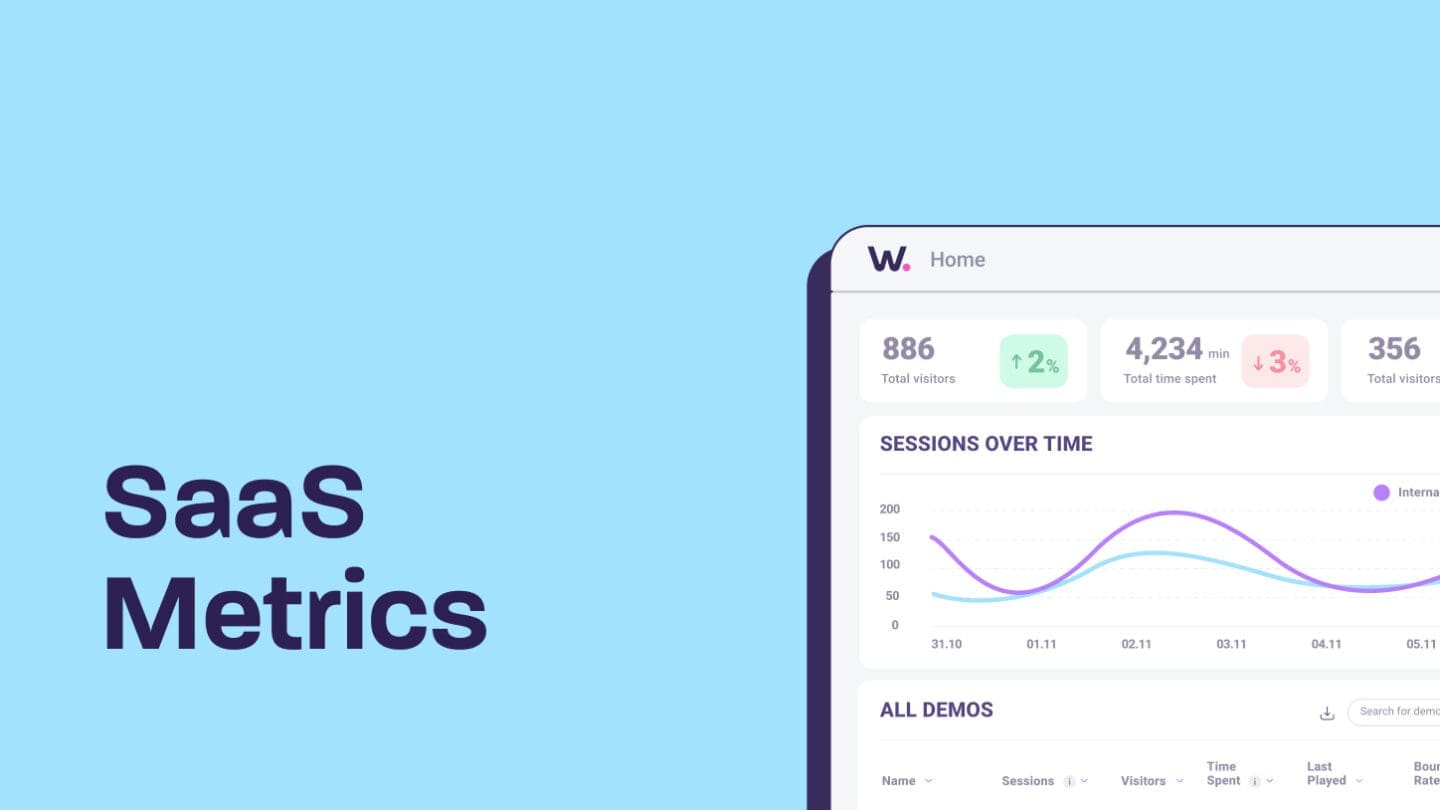One of the most crucial phases in any sales process is the discovery call. This is the time when you determine if your product and your prospect match. In this article, we will discuss the discovery call as it applies to SaaS companies and provide the best practices for every part of the discovery call before you even get on the phone or Zoom call.
You’ll discover what to ask during the sales discovery call and how to structure the call to optimize your overall sales funnel and conversion rates. So, with no further ado, let’s dig into the discovery sales process strategy.
- What is the sales discovery call?
- How to plan the sales discovery call
- How long should a discovery call be?
- What questions should I be asking during my sales discovery call process?
- The 4 primary stages of the sales discovery call
- Stage 1: Get to know the prospect
- Stage 2: Understand the prospects pain
- Stage 3: Understand the prospects expectations
- Stage 4: Reaffirm the prospect interest and go over the next step
- Dos and don'ts of sales discovery calls
- Dos
- Don’ts
- One more way to optimize your sales funnel
What is the sales discovery call?
The discovery call is one of the most important phases of the sales process. This call gives you the opportunity to qualify or disqualify prospects from the funnel. The sales discovery is all about understanding the buyer’s needs, identifying their problems, and ensuring you can actually help them solve a specific pain. It’s also the part where you learn if they can afford your service before you even get to the demo phase.
Once you’ve qualified the prospect, the goal is to bring them one step closer to closing the deal. If the prospect is disqualified during the call, save you both some time and finish the call politely. Because the whole point of the discovery call is to qualify or disqualify prospects, understanding how to execute a discovery call properly is key.
How to plan the sales discovery call
To get the discovery sales process right, you need to research prospects before every call. Research is a crucial part of the sales strategy. Start with Linkedin. Learn about the company and its projects. Then, map out the decision-makers and gatekeepers and connect with them on Linkedin. Once you’ve mapped out the decision-makers, go to Google, search for them and try to learn more about them on a deeper level.
The goal is to get to know the lead as much as you can before the call. Everything you’ll find during your research should be related to helping the business solve a problem with your solution. If you discover your software is not a match, it might not be worth going into the discovery call stage at all. However, you should be careful not to disqualify too many leads during this process – in this case, you might have a qualification issue on your side. In terms of time investment, this research should take only about 5–15 minutes.
How long should a discovery call be?
The length of the call is also a factor. Best practices indicate that the appropriate time frame for the discovery call is by looking at your Lifetime Value (LTV). If your LTV is less than $1500, 15 minutes should be enough. If Your LTV is higher, it could be 60 minutes or even longer.
Besides the “technical” parts of the strategy, it’s important to remember the human elements and continuously build trust with the prospect every step of the way. This is no secret: people make decisions emotionally and justify them with logic.
What questions should I be asking during my sales discovery call process?
It’s essential to know what questions to ask and when to ask them. With each stage of the discovery call, you build up towards qualifying the prospect in full. Qualifying a prospect means they understand the value of your solution, want it, and have the ability to pay for it. This is where you are setting expectations and aligning your goals.
You should be ready to ask multiple questions during the discovery call and practice your active listening. This will help you understand if the prospect is qualified to move to the next phase in the sales call structure cycle – the demo.
To recap, the goals of the discovery call are:
- Qualify/disqualify prospects
- Build trust
- Move to demo phase
The 4 primary stages of the sales discovery call
There are four primary stages to a discovery call. For best results, you should follow each step as another qualifying point. If your prospect doesn’t “pass” all the stages, the chances of closing the deal drop accordingly. So stay alert and analyze the prospect’s answers to qualify or disqualify them. Don’t forget to check out the best sales discovery questions for each stage to make the most of every call.
Stage 1: Get to know the prospect
This is the time when you learn about the prospect’s business, what they do, their needs, and how you can help them achieve their goals. It’s also when you want to start investigating any problems and assess how you can solve them. In “Stage 2,” we’ll dig deeper into the pain points.
If you don’t discover any significant pain that your solution can solve at this stage, it may not be necessary to work through more advanced questions.
“Setting the stage” questions:
- Can you tell me about your company?
- Tell me about yourself. What does your day-to-day look like?
- What are your Key Performance Indicators (KPI)?
- What does success look like to you?
Stage 2: Understand the prospects pain
For both sides to determine if they are a fit, you’ll need to dig into the type of challenges your prospect faces. First, you should start by finding their most significant pain point and get a clear idea of their willingness to resolve it. In addition, you should try to understand how the pain you intend to solve can be translated to measurable criterions. For example, how much time, money, and workforce they currently spend to solve the pain – and how you can minimize this.
Questions that qualify
- What’s stopping you from meeting your KPIs?
- What’s the source of the problem?
- Why is that important to you?
- How “expensive” is it to you at this point?
- How many people will be using this solution?
Stage 3: Understand the prospects expectations
At this stage, the prospect should be more aware of what you offer and if it would work for them. This is typically where pricing models come into play, as well as long-term engagement strategies. Of course, there are wrong answers, and they should be as clear as a red flag; otherwise, you’re wasting your time on a dead end.
Disqualifying questions
- What is your timeline for implementing this solution?
- What roadblocks do you face in implementing this solution?
- Do you have the budget for this project?
- Whose budget does the funding come from? (if at all)
Stage 4: Reaffirm the prospect interest and go over the next step
This is your opportunity to take the prospects who are interested in your solution to the next level. In other words, it means that you’ve set expectations, and your prospect understands the solution and value you offer and is willing to take the next step. The next step would be scheduling a demo with the decision-makers. As a rule, every sales interaction should be very clear about the next steps and have a direct call to action.
Closing questions
- Are you ready to solve this now?
- How will this solution make your life better?
- Have you purchased a similar product before?
- How can I make this easy for you?
Dos and don’ts of sales discovery calls
The sales cycle is a delicate one, so it’s critical to keep some guidelines in mind. Here are a few dos and don’t for your next sales discovery call:
Dos
- Do always try to help
- Do go over your company value proposition
- Do build trust
- Do use natural language
- Do be concise in your responses. You don’t have time for filler words
- Do ask questions that align with the customer’s needs
Don’ts
- Don’t talk too much: ask questions, and listen
- Don’t read from a script
- Don’t try to sell
- Don’t blindly call: do your homework
- Don’t focus on features – speak about solutions
Pro tip: Be respectful and use active listening while you follow the stages of the discovery call for higher conversion rates.
One more way to optimize your sales funnel
There are two pivotal points in the sales funnel: the discovery call and the demo. Both occasions should be taken very seriously and require considerable skill to get right. We covered the sales discovery process extensively, so here’s a tip for your product demo.
Creating customized experiences during the sales process can do miracles to your conversion rate. Designing personalized, real-use demos is one way to accomplish this, but doing so requires development and time resources that companies are usually unwilling to invest in due to high costs.
Walnut is the solution for companies that want to provide personalized demos without coding – or involving other teams. It’s the missing link to producing demos at scale. Within minutes, your salesperson can create interactive and customized demos that will blow the socks right off your prospects. Plus, you’ll be able to view data from your customer’s interaction with built-in analytics. If that doesn’t sound like a competitive edge, what does?
Get started with Walnut by clicking the “Get Started” button today!



